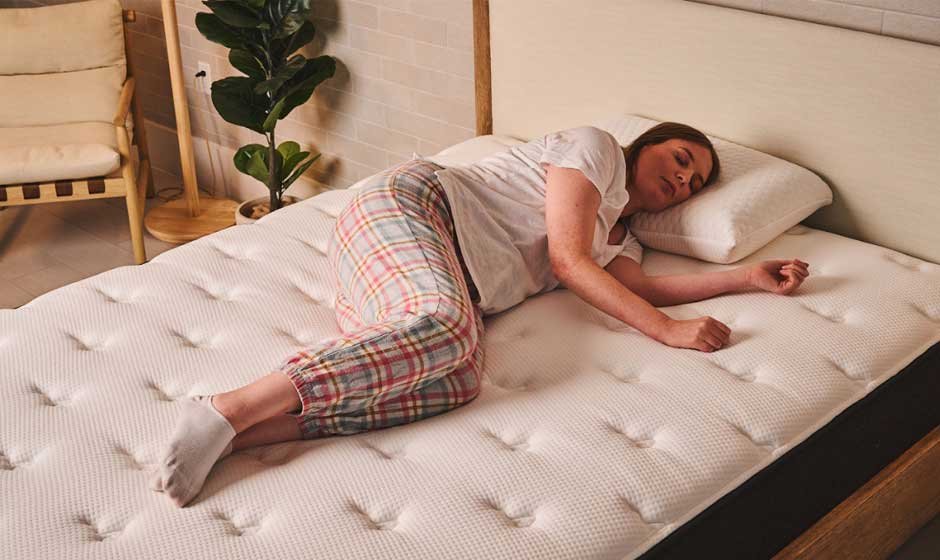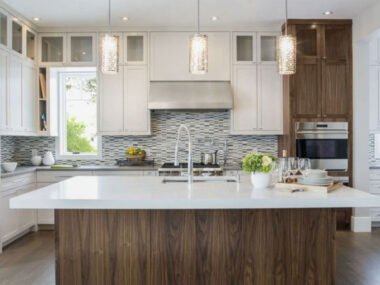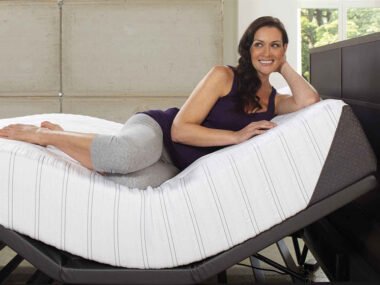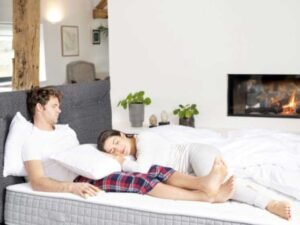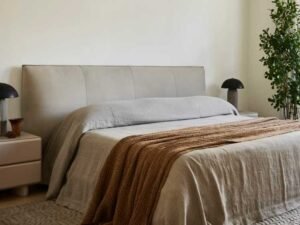When we think of serene interiors, our minds often go to gentle lighting, muted tones, and tactile fabrics. But too often, the pursuit of softness comes at a cost—namely, the physical support our bodies need. Interior calm isn’t just about visual peace; it’s about comfort that nurtures both mind and body. From plush sofas to pillowy mattresses, there are options that fit your style and spine—elegant, understated, and engineered for real support beneath the softness.
The Psychology of Texture: Why It Matters
Our homes are sensory landscapes. Soft textures have a powerful calming effect, evoking feelings of safety, warmth, and relaxation. Whether it’s the feel of a velvety cushion under your fingertips or the cozy hug of a chenille throw, texture influences our emotional state. But in the age of back pain awareness and ergonomic everything, texture alone isn’t enough.
Support is a form of comfort too. A chair that looks beautiful but leaves your lower back aching after 30 minutes? That’s aesthetic betrayal. The true challenge lies in combining the soft with the supportive—creating spaces that relax without wrecking your posture.
Materials That Offer Both Softness and Structure
Let’s break down the most common textiles and materials used in home interiors and how they perform when it comes to both softness and support:
1. Memory Foam with Structured Cores
Memory foam has long been hailed for its plush feel, but modern designs now incorporate zoned support or hybrid cores to offer spinal alignment. Sofas, lounge chairs, and even rugs now come with dense underlayers that maintain structure while keeping the outer surface inviting.
2. Performance Upholstery
Fabrics like polyester blends, microfiber, or velvet-look synthetics now come with durability ratings and ergonomic enhancements. These materials resist sagging while staying soft to the touch, making them perfect for cushions, ottomans, and even headboards.
3. Bouclé and Woven Fabrics
The texture of bouclé adds depth and coziness to a space. While the nubby loops offer a soft visual and tactile appeal, when used on firm structural frames (like in accent chairs), the combination is both inviting and supportive.
4. Natural Latex
Often found in premium mattresses and sofa cushions, latex is a naturally supportive material that doesn’t collapse under pressure. It has a gentle give, making it ideal for people seeking softness without the sag.
Where to Incorporate This Balance in Your Home
Achieving a serene and supportive interior doesn’t require a full remodel. Small, strategic choices can bring softness and support into harmony:
Living Room
- Sofas and Sectionals: Look for pieces with high-resiliency foam or coil support systems beneath a soft exterior. Test depth and back angles to avoid lumbar strain.
- Throw Pillows: Choose feather-down blends or memory foam inserts that hold their shape without flattening.
- Area Rugs: Memory foam-backed rugs or layered textures (a firm jute base with a fluffy top rug) add underfoot softness with stability.
Bedroom
- Mattress: A medium-firm mattress topped with a plush, quilted cover strikes the ideal balance. Materials like hybrid memory foam or zoned latex are your best bet.
- Bedding: Opt for high-thread-count sheets and comforters that feel soft but offer weight and structure, like cotton sateen or weighted duvets.
- Headboards: Upholstered headboards made with padded panels provide a luxurious look and functional back support for reading or working from bed.
Workspace
- Desk Chairs: Go for ergonomic chairs with padded arms and lumbar cushions. Look for textiles that are breathable but also have stretch resistance for long-term durability.
- Floor Mats: Anti-fatigue mats covered in plush fabric are ideal for standing desks or crafting stations.
Interior Styling Tips: Visual Calm Meets Structural Comfort
Soft doesn’t mean shapeless. Interior designers often use contrast and layering to combine comfort with form. Here’s how:
- Stick to a muted palette of beiges, greys, and warm whites to evoke calm.
- Introduce curves in furniture design, but ensure those pieces have solid wood or metal frames.
- Layer textures: Mix a firm wool rug with a plush faux fur throw and a structured boucle chair.
- Minimalist accessories like oversized floor cushions or low-slung poufs can soften a space without compromising ergonomic needs.
Don’t Forget Lighting and Layout
Lighting and space planning also contribute to that feeling of calm. Use soft, diffused lighting—table lamps with linen shades or pendant lights with dimmers—to enhance the visual softness of your interiors. Keep walkways clear and furniture proportional to the room size so the space feels open and supportive, not cramped or chaotic.
Final Thoughts: Design for Your Body, Not Just Your Eyes
In a world full of Pinterest-perfect spaces, it’s easy to forget that design serves a deeper purpose: well-being. A velvet chair that hurts your back, or a pillowy mattress that leaves you sore, doesn’t serve your lifestyle. The most luxurious interiors are the ones that comfort your body as much as they delight your eyes.
By choosing pieces that fit your style and spine, you create a space that’s not only beautiful—but also deeply livable.
